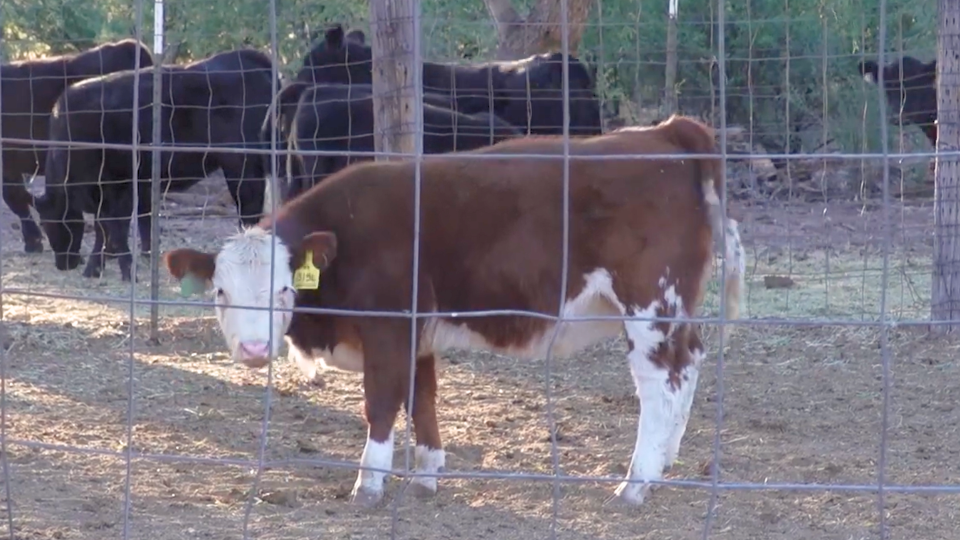Building BRD resilience in young calves
By Dr. David Sjeklocha
Respiratory disease (bovine respiratory disease, shipping fever or pneumonia) is the most common cause of morbidity and mortality in cattle feedlots.1 At the cow/calf level, summer pneumonia can strike calves still on their dams, and respiratory disease is a common challenge around weaning. No matter the age of the calf, often multiple pathogens and some sort of stressful condition, such as a weather event or temperature fluctuations, commingling or moving, can precipitate a respiratory disease outbreak.
How do we build BRD resilience in our calf crop? The management practices and health protocols implemented early on can start the foundation of immunity and make calves more resilient to challenges. It starts with a good foundation of nutrition, animal handling, and using products and tools to improve cattle health.

Adequate nutrition in the second and third trimesters supports fetal development and helps keep the cow in good body condition, which impacts her ability to raise a healthy calf and rebreed.2 We want to make sure energy and protein requirements are met, including an effective deworming program to help cows better utilize nutrients.
Vaccinating cows prior to calving helps stimulate antibody production that will result in higher-quality colostrum, ultimately giving calves better protection at birth. For example, administering a scours vaccine 5-12 weeks before calving boosts antibody levels in the cow’s colostrum, providing increased protection from scours for the newborn calf. Calves need about two quarts of colostrum within four hours of birth and one gallon within 12 hours.3 Plan to provide a clean, dry space with wind protection for calving.
Calves are born with a developing but not fully functioning immune system. It can take six months or more for the immune system to develop. It is possible to avoid interference with maternal antibodies by using quality intranasal vaccines. This will begin to put protective immunity in place within three to four days after vaccination.4 Intranasal vaccines also stimulate nonspecific immunity at the mucosal surfaces, which helps provide protection against pathogens not found in the vaccine.5
BOVILIS® NASALGEN® 3-PMH is the first intranasal vaccine to protect against both viral and bacterial pneumonia. The modified-live vaccine protects against five of the major causes of bovine respiratory disease (BRD), including IBR, BRSV, PI3, Pasteurella multocida and Mannheimia haemolytica. It can be given to nursing calves as young as one week of age, providing effective immunity in just one dose.
Younger animals, such as suckling calves, weaned calves, replacement heifers or stocker cattle, are much more susceptible to parasites because they don’t have any immunity built up against them. Not only do internal parasites reduce feed intake in calves — but immune function, including a positive response to vaccination, can be compromised.
It is important to deworm calves at cow side. Deworming at earlier stages of infection can result in improved weaning weights. For spring calving herds, it typically is good to deworm calves six to eight weeks after turnout onto pasture.6
Deworming cattle ahead of vaccination doesn’t have to mean a trip through the chute or be labor intensive. Using feed and mineral forms of dewormers requires relatively little time and labor and is highly effective.
Preconditioning still pays
Preconditioning is one of the most effective strategies to demonstrate advanced calf health and performance. PrimeVAC™ by Merck Animal Health is an example of a value-added program that focuses on respiratory and clostridial vaccinations, as well as protection against internal parasites. It gives producers a clear guide of the steps needed to help boost the calf’s immune system and health status at this stage. Merck Animal Health also offers a Herd Health Manager tool at HerdHealthManager.com to easily document vaccination, parasite and reproductive protocols, as well as create a veterinary-certified health history to use at sale time.
In addition, train calves to use a feed bunk and water tank. We can lower the risk of BRD by simply making sure they know how to use a feed bunk and water tank before entering the feedlot.7 Good feed and mineral programs, combined with animal husbandry practices, can help overcome challenges.
Consult with your veterinarian to determine the most appropriate testing for persistently infected (PI) BVD in your herd. PI animals are particularly harmful to cattle herds. They may show no clinical signs of the disease yet shed the virus continuously to surrounding animals. A tissue sample — typically an ear notch — is taken, placed in a tube with proper animal ID and sent to a laboratory for testing.
Genetic selection
Selecting replacement stock is also a great opportunity to build resilience in your herd. Keeping good records can help to make decisions on replacements. Then, when the time comes to make those selections, check your records to see which calves had to be treated — for scours, for BRD, or anything else. Move these animals lower on your replacement list and take a good look at calves from prior years from those dams. It may be a good opportunity to cull those cows.
Also, when purchasing herd bulls, ask the seedstock producer to see any treatment records on the bulls they have for sale. While disease resistance is not a highly heritable trait, there is no reason to open the door for poor disease-resistance genetics.
Cattlemen to Cattlemen – Protecting calves with intranasal vaccines
Work with your veterinarian
Taking steps to build the BRD resiliency of your calf crop helps cattle withstand a disease challenge and prepares them to take off in the next phase of production. Work with your veterinarian to build a health protocol specific to your herd.
Resources
- United States Department of Agriculture. Animal and Plant Health Inspection Service. Veterinary Services. Centers for Epidemiology and Animal Health. Info Sheet. Types and Costs of Respiratory Disease Treatments in U.S. Feedlots. April 2013. https://www.aphis.usda.gov/animal_health/nahms/feedlot/downloads/feedlot2011/Feed11_is_RespDis_1.pdf. Retrieved Jan. 24, 2024.
- Selk, G.E., et al. Relationships among Weight Change, Body Condition and Reproductive Performance of Range Beef Cows. J. Anim. Sci. 1988. 66:3153.
- Walz, T. The Importance of Colostrum to the Newborn Calf. University of Nebraska–Lincoln Institute of Agriculture and Natural Resources. March 1, 2019. https://beef.unl.edu/beefwatch/importance-colostrum-newborn-calf. Retrieved Feb. 6, 2024.
- Kesl, L., Saltsman, R., Burdett, B., Nordstrom, S., Xue, W. Determination of the Number of Days from Vaccination to Challenge Required for Protection from Infectious Bovine Rhinotracheitis (IBR) Virus Challenge Following Vaccination with Onset 5 IN and Vista 5 SQ in 13–30 Day Old Colostrum Deprived Calves. Publication pending World Buiatrics. 2022.
- Midla, L., Griebel, P., Edmonds, M., Van Engen N., Townsend, H., Renter, D., Streeter, M., Hutcheson, J. Nasalgen vs. Inforce: Immune Response to Vaccination in Neonatal Colostrum Fed Holstein Calves. Publication pending in JAVMA. 2021.
- Kevin Gould. Beef cattle deworming strategies. Michigan State University Extension. Jan. 21, 2022. https://www.canr.msu.edu/news/beef_cattle_deworming_strategies. Retrieved Jan. 24, 2024.
- Pendergrass, E. Bunk Breaking Calves for Success in the Feedyard. The BEEFMASTER Pay Weight. Fall 2021. 7(2)(1)17-18. https://issuu.com/beefmasters/docs/beefmaster_pay_weight_fall_2021_web. Retrieved Jan. 24, 2024.
Find more content for your beef operation.
About the author

David Sjeklocha, D.V.M.
Technical Services Manager,
Merck Animal Health
